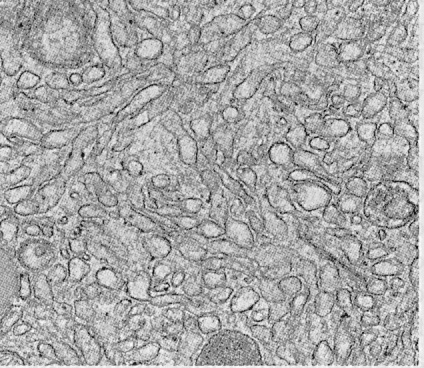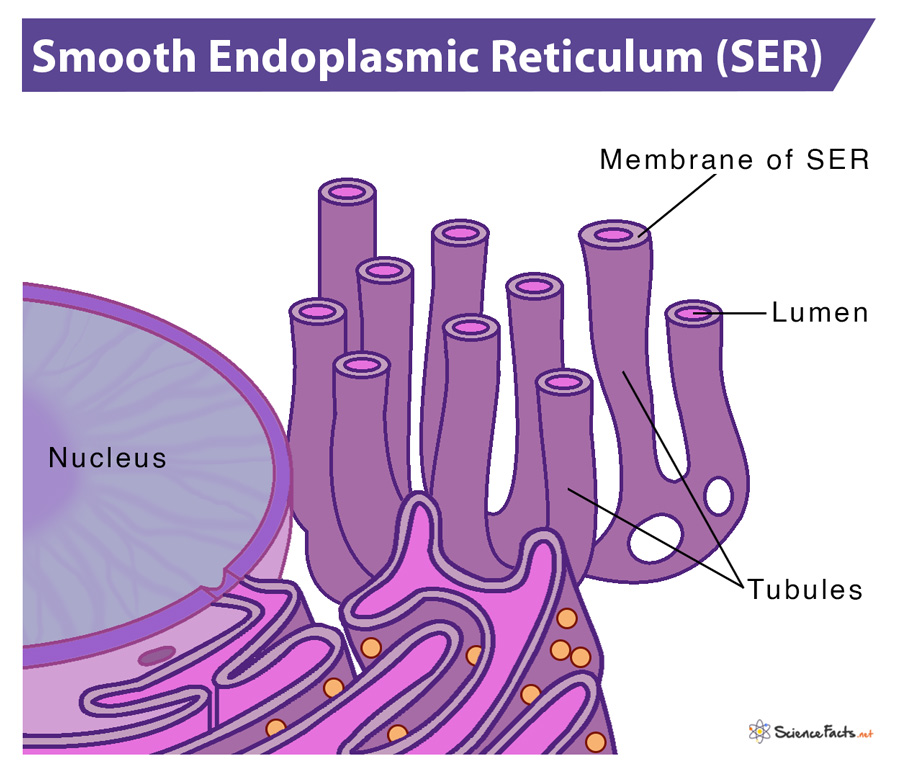Location of Smooth Endoplasmic Reticulum
Structure of SER
Functionsof SER
Diseases Caused by Dysfunctional SER
The interior of the smooth ER is called the lumen, enclosed by a phospholipid membrane similar to the cell membrane enclosing the entire cell. Unlike RER, it lacks ribosomes on its outer membrane, thus named ‘smooth’. These purposes of SER in a cell are described below in detail:
1. Lipid Synthesis
SER is the primary site for lipid synthesis, where SER makes close contact with other cell organelles. Such sites, known as membrane contact sites (MCS), also help to transfer substances between them. The enzymes in those sites help synthesize the vast majority of cellular lipids. Some common lipids formed by SER are phospholipids, sterols, and steroids. The lipids thus synthesized include a significant portion of the cell membrane’s lipid bilayer. They also form the structural elements of the cell.
2. Detoxification
The dynamic nature of SER helps detoxify many substances, including drugs, making them easy to remove from the liver cell. A particular group of enzymes, cytochrome P450s, carry out these jobs. These enzymes act by adding a hydroxyl group to drug molecules, making them more soluble and easier to flush from the body.
3. Regulation of Calcium Ion Concentration
In muscle cells, for example, a specialized SER called the sarcoplasmic reticulum (SR) is responsible for the storage and regulation of calcium ions required to trigger the coordinated contractions of the muscle cells. The SR takes up the calcium ions from the cytoplasm and releases them when the muscle cell is triggered by a nervous stimulus, resulting in muscle contraction. In this manner, the sarcoplasmic reticulum helps regulate calcium ion concentrations in the cytoplasm of skeletal muscle cells. In nerve cells, the intake or release of calcium ions controls neuronal activity, such as its contraction, relaxation, and transfer of nerve impulses. Calcium ions released from the smooth endoplasmic reticulum also stimulate the secretion of vesicles that contain new proteins.
4. Carbohydrate Metabolism
The metabolism of carbohydrates such as glucose provides energy for all living organisms. SER produces an enzyme called glucose 6-phosphatase, which hydrolyses 6-phosphate to glucose during glucose synthesis from non-carbohydrate precursors like pyruvate, oxaloacetate, succinate, and lactate through gluconeogenesis. The glucose 6-phosphatase formed by gluconeogenesis is transported to the lumen of SER, where it finally forms glucose by the action of the glucose-6-phosphatase. Disorders such as Von Gierke disease affecting glycogen metabolism and Cytochrome P450 oxidoreductase deficiency (PORD) affecting steroid hormone synthesis, development of the skeletal system, reproductive system, and some other parts of our body are also caused due to some malfunction in SER.

